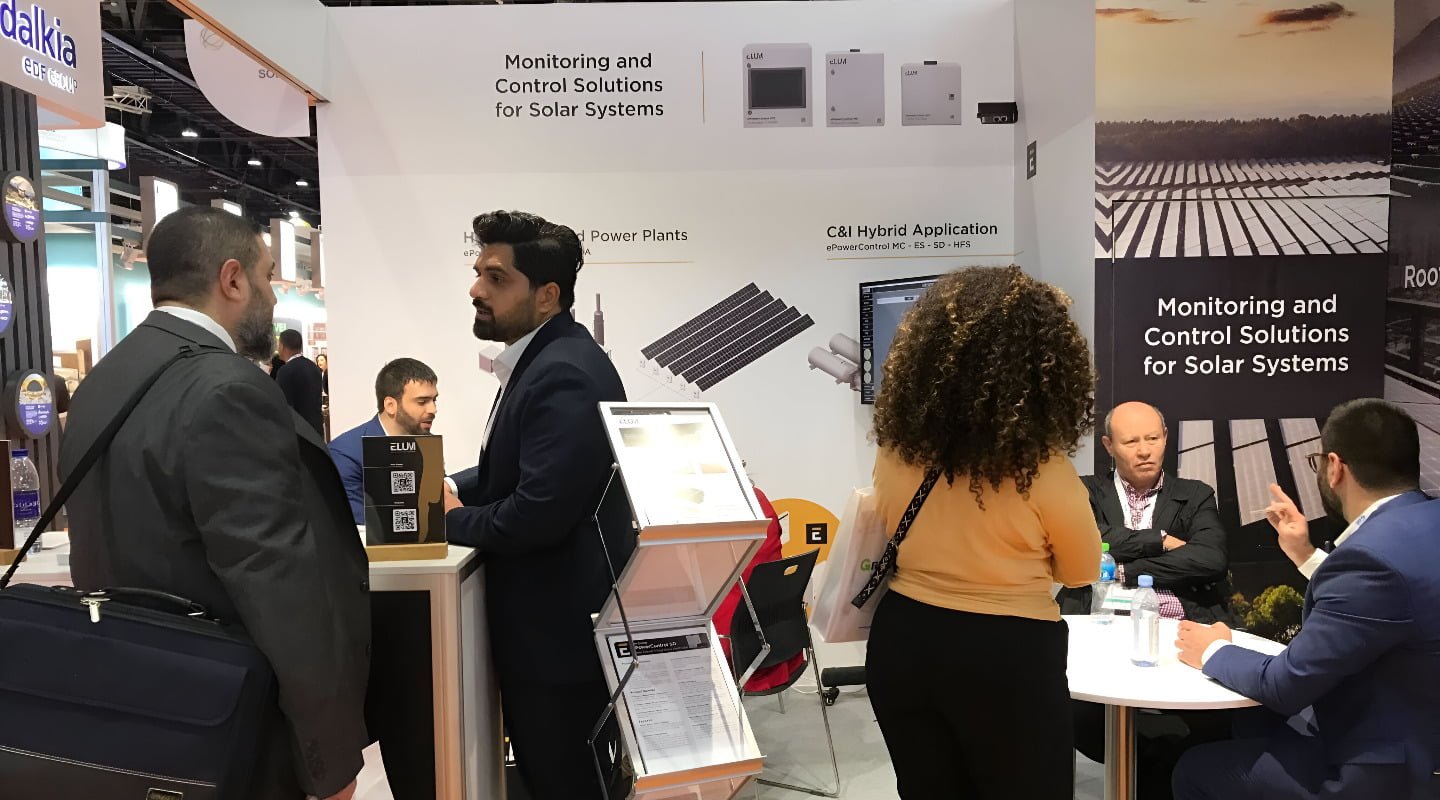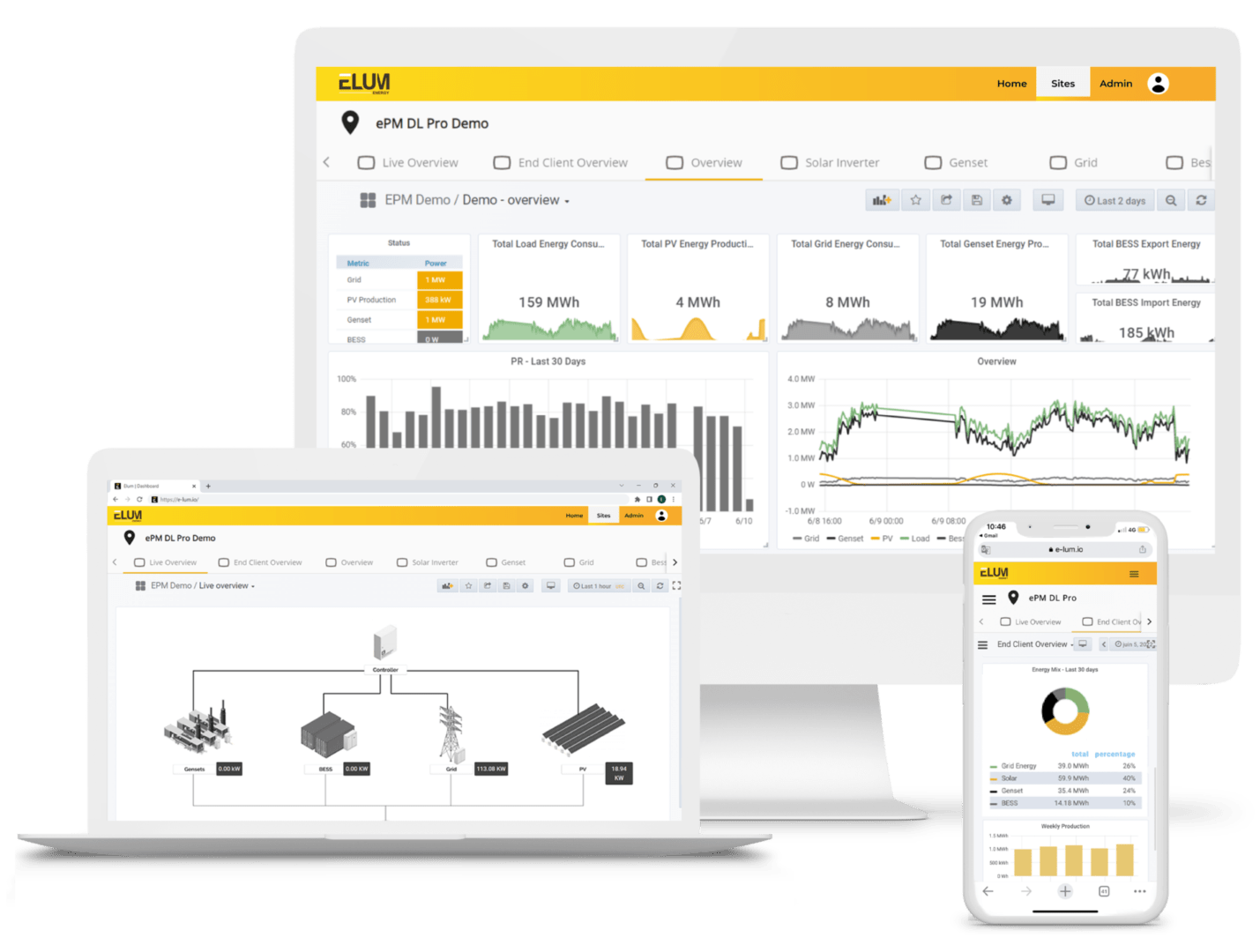What is a solar hybrid microgrid?
Welcome to the foundation article in our series that will explain how to manage a microgrid. This article will define what a solar hybrid microgrid is, the different types of microgrids, and their best uses.
For decades, most countries relied on large power grids to fulfill electricity needs. However, many territories in the world still suffer from a defective or non-existent power grid. That is amplified by economic and demographic growth of the population that increases the demand which is expected to increase 57% by 2050.
In recent years, the world has witnessed a significant shift towards renewable energy sources as a means to combat climate change and ensure a sustainable future. One of the most promising developments in this realm is the advent of solar hybrid microgrids. These innovative systems combine solar power generation with other energy sources and advanced control technologies to create a reliable and efficient solution for electricity generation and distribution.
What is a microgrid?
A microgrid is an energy distribution network that relies on local means of producing electricity. It is designed to operate independently or in synchronization with the national network, within a defined area. In order to enable isolated or remote areas to secure their economic activity and benefit from reliable energy, it is necessary to ensure the production and distribution of electricity. It is also an opportunity to profit from clean distributed and renewable energy. Note: The term microgrid is also often used to describe nano-grids and mini-grids. There is no exact definition but we can set them apart:
- Picogrid are small power supply systems that provide connected items with limited capacity. Pico solar photovoltaic appliances are increasingly being used in Sub-Saharan Africa. Those systems named Pico PV or Solar Pico System (SPS) are mainly produced for rural areas with electricity issues where the energy demand is too low or the cost of a Solar Home System (SHS) is not affordable enough to rely on a nanogrid.
- Nanogrids are single domains of power with a single physical layer of power distribution. Though still supplying energy with limited capacity, the scale of the applications is more important than those of a picogrid. For example, Nanogrid applies to SHS where each home is powered by an autonomous photovoltaic system. Most common SHS are composed of a single solar panel, a battery with a prepaid meter and an electrical plug offering enough energy to supply a house with basic electricity needs.
- A microgrid system is a power supply system that consists of loads and distributed energy resources, such as renewable energy sources, combined heat and power generation, fuel cells and energy storage systems.
Microgrids can operate independently or in synchronization with the electricity grid, ensuring the supply of local and reliable energy at all times. But, what exactly is a solar hybrid microgrid?
What is a solar hybrid microgrid?
Put simply, a solar hybrid microgrid is a localized energy system that operates independently or in conjunction with the main power grid, utilizing a combination of solar energy, energy storage, and other conventional or renewable energy sources. The aim is to optimize energy generation, consumption, and storage while ensuring a stable power supply in a cost-effective and environmentally friendly manner.
The core component of a solar hybrid microgrid is solar photovoltaic (PV) panels, which convert sunlight into electricity. These panels are typically installed on rooftops, open fields, or specialized solar farms, harnessing the abundant and clean energy provided by the sun. During daylight hours, the solar panels generate electricity, which can be utilized immediately or stored for later use.
What are microgrids made of?
A microgrid is typically composed of:
Fuel generators or gensets:
Most microgrids rely on gensets. They are a safe and reliable electricity source for all countries. Fuel is easily stored and with a high power factor, it is less demanding/it is easily managed. The issue with fossil fuels is that the price is dependent on economic and political events. This leads to financial uncertainties for companies and utilities using it as their main energy source. Despite fuel being available everywhere, the logistics can be challenging and steeply raise the final costs while increasing greenhouse gas (GHG) emissions.
Renewable energy sources (solar, wind, hydro):
Renewable energy prices have fallen during the last few years and are now cheaper than fuel without any subsidies. Solar PV module prices have fallen by around 80% since the end of 2009, while wind turbine prices have fallen by 30–40%, increasing the deployment of such technologies. However, the main challenge is in intermittency for solar and wind. When the sun is down or there is no wind, there is no production of electricity coming from renewables which is a threat to the electricity supply.
Energy storage solutions (batteries generally Lithium or Lead Acid):
Energy Storage is one of the trending domains of the energy sector. With the falling cost of Energy Storage Systems (ESS), batteries are seen as a solution for the lack of reliability of green energies as they can make up for their intermittency. However, batteries are still expensive and can not compensate fully for irregular power generation.
Microgrid Controller:
A microgrid controller employs intelligent algorithms and real-time data analysis to manage the flow of electricity within the microgrid. It ensures optimal energy dispatch, balances supply and demand, and detects and addresses any technical issues promptly. Additionally, it enables seamless integration with the main power grid, allowing the microgrid to operate independently or collaborate with the grid when necessary.
Power Grid (if available):
Whether it is on the grid or off the grid the set of the frequency of the microgrid will be different, either assured by the grid, the gensets, or the batteries if needed.
Load:
It may be for commercial, industrial, or residential applications. This is the energy demand which is the most important point for a microgrid. As its goal is to ensure a safe, reliable and affordable energy supply.
Microgrids have become competitive with drastically lower prices thanks to the steep drop in the costs of some components, in particular, photovoltaic panels, batteries, and the development of energy management systems (EMS) and PowerPlant Controllers.
Solar diesel hybrid system:
To address the intermittency issues of renewable energy sources like solar, many microgrids incorporate solar diesel hybrid systems. These systems combine solar power generation with diesel generators, ensuring a continuous power supply even when solar production is low or during periods of high demand. The diesel generators kick in when the solar power is insufficient, providing a reliable backup and enhancing the overall resilience of the microgrid.
Best use of microgrids?
Microgrids are most adapted to territories with insufficient or deficient power supply, for affordable reliable and local energy. The integration of local renewable energy production and energy storage enables industrial buildings in isolated regions to limit the multiple outcomes of a possible network outage. They are also a perfect choice for remote rural areas. To this day there are still 940 million people who do not have access to electricity.
However, solar power generation is intermittent, as it depends on sunlight availability. To overcome this limitation and ensure a constant power supply, solar hybrid microgrids incorporate energy storage systems. These systems store excess electricity produced by solar panels during peak hours and discharge it when solar generation decreases or during periods of high demand. Battery storage is commonly used in solar hybrid microgrids, enabling the stored energy to be used during the night or during cloudy weather.
The heart of a solar hybrid microgrid lies in its advanced control and monitoring systems. These systems employ intelligent algorithms and real-time data analysis to manage the flow of electricity within the microgrid. They ensure optimal energy dispatch, balance supply and demand, and detect and address any technical issues promptly. Additionally, they enable seamless integration with the main power grid, allowing the microgrid to operate independently or collaborate with the grid when necessary.
What are the advantages of a solar hybrid microgrid?
Solar hybrid microgrids offer several key advantages over traditional centralized power systems. Firstly, they promote energy self-sufficiency, reducing reliance on fossil fuels and mitigating the risks associated with centralized power generation. They also enhance the resilience of the electricity infrastructure, as the localized nature of microgrids makes them less vulnerable to widespread blackouts caused by natural disasters or other emergencies.
Moreover, solar hybrid microgrids contribute to a significant reduction in greenhouse gas emissions, aiding in the fight against climate change. By tapping into renewable energy sources and incorporating energy storage, these microgrids facilitate a smooth transition toward a low-carbon future.
Solar hybrid microgrids have proven particularly valuable in remote areas and communities with limited access to reliable electricity. They have been deployed in off-grid regions, islands, rural communities, and developing countries, where they have empowered local populations, improved living conditions, and facilitated economic growth.
Conclusion
The use of microgrids is steadily increasing and represents a promising solution for sustainable energy generation and distribution. By combining solar power, energy storage, and other energy sources within an intelligent control framework, these microgrids offer a reliable, resilient, and environmentally friendly alternative to traditional centralized power systems. As the world continues its transition towards a renewable energy future, solar hybrid microgrids are poised to play a vital role in shaping the energy landscape of tomorrow.
Having defined the concept of a solar hybrid microgrid, be sure to read Part 1: How to efficiently manage microgrids: Load Shifting for Grid-tied System
the Contact us industry ?






